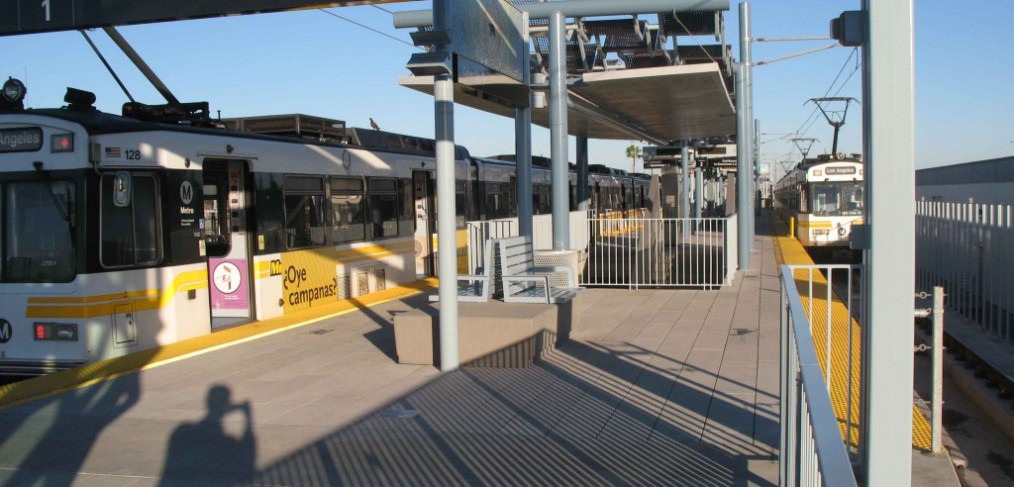
Stressed out? Ride your bike to work!
Can biking lead to a healthier lifestyle and a more resilient city?
Let’s face it, being an architect is not the healthiest career choice. The travel. The hours. The stress. And the sitting. There’s a lot of sitting. Until very recently, my typical commute was one hour by car, mostly sitting in traffic, followed by 10-12 hours sitting at my desk, then back in the car to sit in traffic. That’s about 14 hours of sitting each day. And, though there are some success stories on the traffic front (LA’s air quality has improved dramatically in the last 20 years), average commute times continue to increase. And, no shock here: LA’s traffic continues to be the worst in the nation. Like I said, I used to drive to work.
Several years ago, LA Mayor Antonio Villaraigosa got behind Measure R, which imposed a sales tax on purchases in LA County to fund transit improvements over the next 30 years. Since then, LA Metro (our transit authority) has been aggressively building systems which optimize the road infrastructure we have and expand alternatives to the automobile. These include new light rail lines, articulated bus systems (those are the ones with the accordion hinge between cabs), smart signalization systems for transit and expanded bike networks. Several years after Measure R was put into effect, Los Angeles now has one of the most extensive bike and light rail train network in North America. And it’s only getting bigger.
This sort of success story shows how planning and urban design are critical to the future resiliency of our cities. We need streets that can accommodate more than just cars. We need trains and buses that accommodate lots of people moving lots of places. Walkable, bikeable connections from each station to destinations need to be safe and easy to navigate. At those destinations, we also need storage and shower facilities. The potential of all this forward planning is that as traffic continues to worsen, the alternatives to getting around get better, easier and more viable.
There are some very encouraging signs that we’ve reached a tipping point and people have begun to change their habits. Public transportation in Los Angeles County has increased consistently by 8% per year. And I’m proof it’s working. Living in Venice, I’m about 18 miles from the office. Last year, the Expo Line (a light rail line that serves the West Side) opened and cut the commute time to downtown to about 30 minutes. My station is served by a dedicated bike trail that starts near my house. Now, by commuting by bike, I get more than 90 minutes of cardio per day, and my overall commute time is about the same as by car. That, combined with a shower and bike storage in the office (thank you RTKL), has made public transit a viable alternative for me and many others.
My blood pressure is now the lowest it’s been in years, and my Audi A5 is looking a little forlorn in my garage, but this is a much better way to get to work.
Image via Esirgen


Nate, thanks for sharing your story. I love it that you are now one of the converts, who have gone from 90 minutes in the car to 90 minutes on your bike. Your conversion is a double-whammy; not only have you done your part to improve our environment, you’ve also improved your personal health (physically and mentally). Your story inspires those of us who have not “converted”… yet!
thanks for your comment, Steve. I am hopeful that by commuting in modes other than the car, the streets eventually become a “shared” asset.
Hey Nate – as a south bay resident is there some reasonable path to get to the downtown office. Your pic looks like its from the bike path along ballona creek starting in marina del rey? PMCM has no shower but maybe some kind person at RTLK would let me use theirs?
Ken;
I emailed you the LA Backbone Bike map for your use. As for your question about the shower facils; you need a keycard. FOCI rules will probably not permit you to use RTKL’s but you can contact Barbara Proano in our office about it if you are interested.
Hey Nate- Great blog, you know i like the bike and rode mine to work every day for two years while in Shanghai. It is really a good way to get around and as you say get some great exercise all in the same amount of time it takes one to drive to work. It takes strong leadership from our policymakers to implement more bike lanes and people like yourself to set the positive example to inspire others.
It is spreading around the country Boston and New York have success in implementing the bike lane as well.
I agree. the more cyclists take the road, the safer it becomes. also striping the bike lane with a solid color has been proven to be effective.